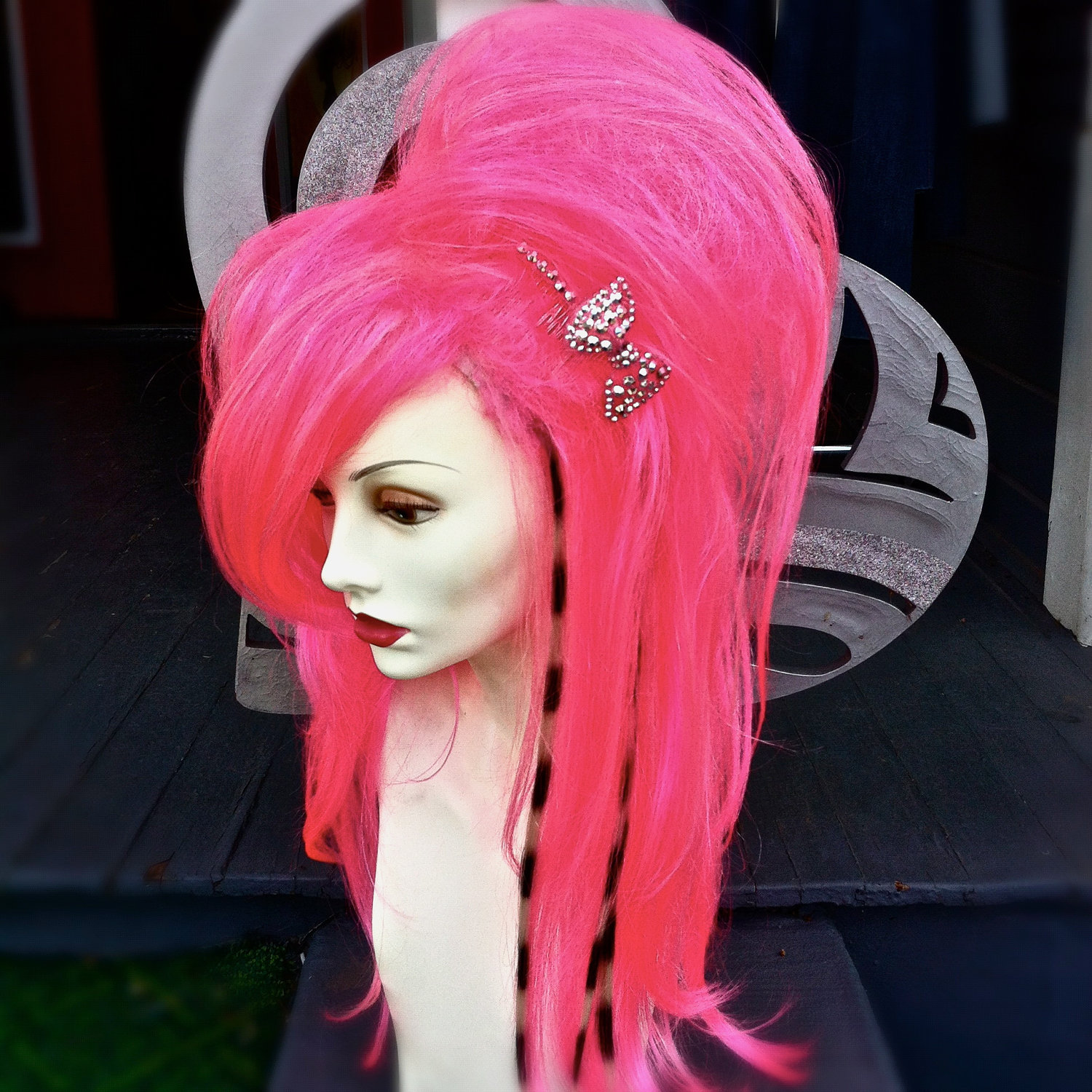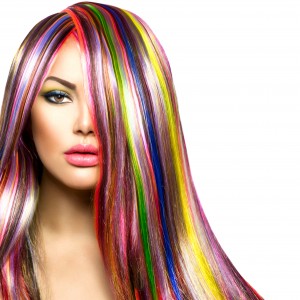Behind the scenes of the fashion industry
It’s quiet and sombre in the dressing room as she stands there waiting for the curtains to go up. The fumes of hairspray clinging on to her elaborately curled locks, her eyelids glittering gold and bronze shades of elegance, and her sleek silhouette wearing the fabric of every fashionista’s midnight summer dream. As the applause dies down, she patiently waits for the lights to illuminate her path to the shutterbugs. Chin up, shoulders back, smouldering gaze, curtains lift. Her nine inch jewelled stilettos hit the ramp with fierce confidence and her bedazzling smile is taken in by every photographer within a ten feet radius. And somewhere in between the glitz, the glamour and the camera flash, you can hear a quiet collective sigh of pure relief from the fairy godparents of the industry, who have spent months of absolute madness coupled with sleepless nights and innumerable cups of coffee, to make this happen. The dedicated artisans of the beautiful art that is fashion.
We are going behind the scenes, past all the glamour and glitz, straight into the heart of the industry. It’s not all rolls of beautiful fabric with sequins and lace, or flawless and graceful models on glossy covers of fashion magazines. What most don’t see beyond the ramp and the high couture brands is the massive amount of talent and hard work that goes on behind it. We talk to the experts who have made their name in the industry – from designers, stylists, and bloggers, to merchandisers and retailers – to get an insight into how aspiring fashion enthusiasts can get into the industry and what they can expect.
Fashion design – From rags to stitches
Fashion, as an industry, attracts a clientele because of the desire, as a social being, to look impressionable with a distinct style. Designing is the life blood of fashion, as it provides the look that can make you or break you, and design is what separates everyday attire and an exciting new trend. Who are you wearing today?
Monica & Karishma
“QUALITY, CONSISTENCY AND STRONG BRANDING STRATEGY”
Launched in 2008 by designers Monica & Karishma, JADE is today synonymous with discreet luxury and timeless elegance
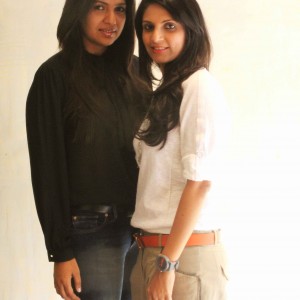
When and where did you start out in the fashion industry?
We have been consulting for internationally acclaimed labels now for over a decade. Having had this exposure and experience, we then decided to begin Jade.
How does your brand make a mark and stay unique while compared to all the other retailers in the country?
Quality, consistency, strong branding strategy and sticking to our design DNA to carve our unique identity.
Can you tell us how you established the label, produced and distributed it?
We have been consulting for international fashion labels and therefore have had good experience and insights in the production and technical aspects. Distribution was the least of our concern initially as we wanted to test waters with our label and establish our creative DNA.
How do you plan to expand your brand further?
We look at ourselves as a complete fashion brand and are currently focusing on introducing shoes and bag lines. We have an online store coming up soon which will help bridge the gap between our clients who are spread across the globe.
Ujjwal Dubey
“I BELIEVE IN A BIT OF MADNESS IN WHATEVER I DO”
Ujjwal Dubey, an NIFT graduate, has acquired a strong platform through his instant head-turner label Antar-Agni, that resonates a distinctive sense of nostalgia and ease. He talks about his passion for fashion and what makes a designer click in the industry:
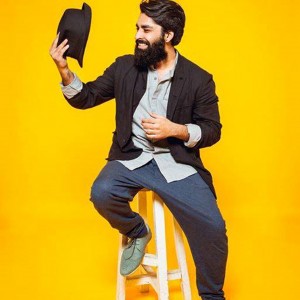
When and where did you start out in the fashion industry?
It all started from college. Later I joined Shantanu & Nikhil in the year 2010 and gradually moved over. How would you describe your brand? I’m not a ‘fashion guy’ myself. I help the fabric speak its language, adding nuances in details, smart cuts and relaxed silhouettes – as raw and natural as it gets.
Was this something you had aspired to since childhood?
Fashion was not something I always thought about. It was a gradual and long process.
What kind of educational background and skills are required, besides an eye for aesthetics and design?
I would not say that it’s a compulsion to go through a design education in terms of developing aesthetics, but one needs bit of technical know-how for which it’s kind of necessary. It also helps bring change in you and your approach.
Who do you look up to in the industry?
Nikhil from Shantanu & Nikhil has been a great inspiration. My other role models would be Aneeth Arora from Pero and Yohji Yamamoto.
Could you give us an insight into how you established your label, produced and distributed it?
I believe in a bit of madness towards whatever I do. I worked for 3.5 years and got through Lakme Fashion Week in 2014. Started from home and the first show did quite well for me, so I moved to a small dungeon. I showcased again in Aug’14, and by that time the style and signature of the label was well received by people. Later I started stocking in couple of stores in Delhi, Mumbai, and Chennai.
What do you have to say to aspiring designers?
Work hard and believe in yourselves.
Anushka Khanna
“IT’S A GREAT TIME FOR YOUNG DESIGNERS”
Anushka Khanna, 28, owns an eponymous label that features alluring, foxy textures on contemporary silhouettes. She believes that a mix of theory and practicality is essential to make it big in this industry:
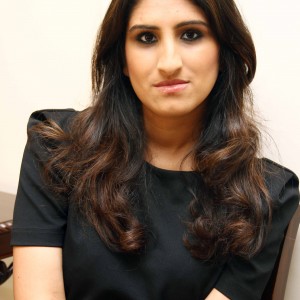
When and where did you start out in the fashion industry?
I graduated from the London College of Fashion and got to work immediately. Initially, I started out working on a resort wear label primarily for export; however, I soon realized that there was a gap in the market for cool, affordable, glamorous Indian wear and resort wear. When I designed a sari for my sister to wear at a wedding, through word of mouth I got my first few clients. After that I participated in exhibitions like Araish, Design One and Lakme Fashion Week. There’s been no looking back since!
How would you describe your brand?
I believe it’s classic, updated to fit contemporary wardrobes. I love the idea of having shirt dresses, silk track pants, column dresses in your wardrobe that you can pull out at any time. And there’s always a glamour factor. For Indian wear, I love colour, delicate embellishments and playing with silhouettes.
Was fashion designing something you had aspired to get into since childhood?
I was always more creatively inclined and since my family has been in the garment and textile business for years, it seemed like a good fit! My father was hugely instrumental in my taking up fashion.
Could you give us an insight into how you established your label, produced and distributed it?
I was incredibly lucky to have my father’s back-end and expertise to work from. It’s a difficult industry in terms of getting the right talent, studio locations and so on. I would suggest investing in a good team, good machinery and adequate space to work from before setting up. Hard work and dedication is also very important to make it big.
What do you have to say to aspiring designers?
Know why you are getting into the industry? Is there really a gap? Are you providing anything different? And really don’t be afraid to stick to your aesthetic.
Fashion Production – Getting Things Done
If designing is what gives birth to a fashion product, production is what leads to the successful execution of the idea. From selecting raw materials to coordinating the entire process of creating a dress precisely from the design provided, is a rigorous task which requires a lot of attention, and one that only the experts of the trade can tackle
Deepika Gehani
“PASSION WILL HELP YOU SUCCEED”
Deepika Gehani got involved with the fashion industry at a young age when she began studying textile designing alongside her B.Com, spending her teenage years researching age old weaving techniques. Her inspiration has been her mother, whom she also desires to emulate as a successful businesswoman, as she tells us:
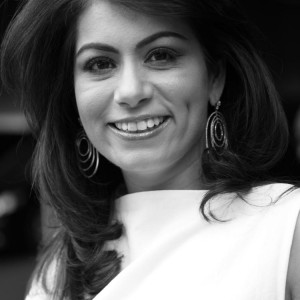
When and where did you start out in the fashion industry?
I was inducted into the world of fashion at a very young age with my family business. My label retailed out of my stand alone store in Mumbai and at various multi-brand luxury outlets and high-end fashion boutiques across the country and abroad.
What is your role as the creative director of Genesis?
I look after all requirements for brand positioning, marketing and merchandising for the labels under the Genesis umbrella. I am involved in the selection making process for all buy orders that we receive across our brand along with my respective merchandising teams. Attending the international fashion weeks to stay abreast on all international trends combined with my design aesthetics and understanding of the Indian sensibilities, I ensure that the products that we receive at our stores cater to our affluent customer’s tastes whilst offering them the best of the world.
How does one make their name in the industry?
Before social media and the internet, your work spoke for itself. Today social media marketing and marketing plays a very important tool. Often designers sell for their name more than their work.
What do you have to say to aspiring designers?
Aspiring designers need to have a unique perspective on what they want to sell, stand out of the crowd. They need to be clear on if they want to send to retailer or directly to customers. It’s important to have a strong business acumen, how to manage your money, orders, production, delivery and everything else to perfection.
Istituto Marangoni
“PRODUCT MANAGER IS VITAL TO FASHION PRODUCT DEVELOPMENT”
‘Fashion production is the profession that makes the fashion dream a reality’ believes Istituto Marangoni, the design institute that trains more than 3000 students in every stream of the fashion industry, coming from 92 different countries in the five campuses of Milan (fashion & design), Paris, London and Shanghai, the international capitals of fashion and luxury. Excerpts from the interview
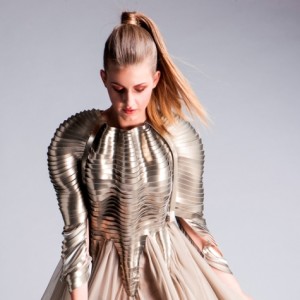
Why is a product manager important in the process of fashion production?
The product manager is the key figure in the chain of fashion product development, linking the creative and productive functions, able to apply theoretical knowledge and aesthetic approaches to feasibility analysis related to production processes (continuing or new products) and costs (within the company or outsourced).
What do his responsibilities include?
The essential work of the product manager is to coordinate design themes, budgets and the time line of a collection.The manager also looks after the relationship between the merchandise suppliers and the production, outsourcing, quality control and pricing. The professional profile brings together the work of the design studio, pattern cutting and production to ensure that the collection attains the required style, price points and delivery dates.
What are the different undergraduate and postgraduate courses available for fashion students?
We offer undergraduate courses for every stream in the industry – Creative, Communication, Management: Fashion Design, Fashion Styling, Fashion Business, Fashion Accessories design & Fashion Communication and New Media. Postgraduate specialized courses for every career in the fashion industry: – Fashion design (Womenswear); fashion design (menswear in collaboration with Ermenegildo Zegna), Knitwear design. – Fashion Styling & Portfolio, Fashion Photography & Film (Super Studio 13), Fashion Promotion, Communication & Media. – Fashion and Luxury Brand Management, Contemporary Fashion Buying, Fashion Product & Production Management; Fashion Retail Management, Fashion & Law (the first of its kind), Fashion Elite (a unique course for talented students to help them launch in the industry)
“You have to know the textile process inside out. I have gained hands-on experience I deal with the weavers, but to deepen my knowledge, I bought myself books to research, sometimes order fabric and have it custom knitted and dyed….”
– Fabiola Marin, alumni at Istituto Marangoni
Fashion Retail – The Consumer Connect
Markets need the finished products to be made available for consumers completing the cycle of fashion as an industry. Online retailing has also emerged as a fast growing industry where consumers can gain access to all leading brands from around the world in a single web space and shop more conveniently from any location on the globe
“CREATIVE FLAIR AND PASSION FOR RETAIL”
While theoretical knowledge in a subject may differ vastly from what hands on experience in the industry may look like, experts from Whistling Woods Neeta Lulla School of Fashion give us a peek into what retail is all about:
What kind of educational qualifications are required to get into fashion retail management as a career? Can you list out the specifics?
Graduate in any discipline, basic computer knowledge, good communication skills, and general and commercial awareness.
When, where and how do retailers start out in the fashion industry?
They start of as assistant buyers, assistant merchandisers, visual merchandisers, fashion consultants, in junior executive fashion marketing, or even as fashion entrepreneurs.
What is their role in the fashion industry?
Buying for brands or merchandising in terms of getting the right product at the right time and meeting annual brand targets. In Visual Merchandising, it’s being responsible for the entire store layout and ensuring the right product is displayed in areas that
will boost sales.
Could you give us an insight into how the retail process works, with respect to fashion?
With the right business plan and target market in place, retail process begins with sourcing the right product to the last stage in the movement of fashion goods and services to the consumer. It involves a direct interface with the customer and the coordination of business activities from end to end.
How does one make their name in the industry?
What kind of skills do you require, besides an eye for aesthetics and design? At entry level, a candidate will be expected to have most of these skill sets: Post Graduate from a reputed institute; strong analytical skills; negotiating skills and the ability to network and influence people; team working and interpersonal skills; excellent communication skills; numeracy skills and proficiency using IT; good organisation skills and the ability to multitask; the ability to cope with the pressure of having to make important decisions and meet tight deadlines; the ability to work in a fast-paced environment and achieve targets; drive and determination; leadership attributes; creative flair; confident presentation style and a passion for retail.
Shreya Juneja
“SOCIAL MEDIA HAS TAKEN OVER THE FASHION HUB”
Jaipur born, Shreya Juneja, with a degree in luxury marketing from Regents College in London, finally decided to give in to her passion in fashion with her online retail brand, ShopViolla, with chic clothing and bold exquisite tribal silver jewellery being her unique creation
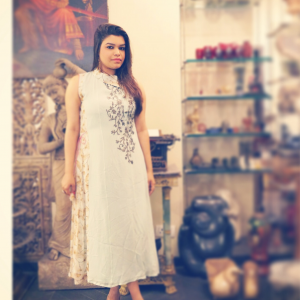
When and where did you start out in the fashion industry?
I always had an interest in fashion and it was finally polished from my Masters Degree in Luxury Marketing in Regents College, London. ShopViolla was incorporated in November 2013. The company is based out of Jaipur.
How does your brand make a mark and stay unique while compared to all the other online retailers in the country?
ShopViolla is known for its unique and exquisite tribal silver jewellery which is from Jaipur and curated by me. The vintage signature silver statement pieces make ShopViolla different from most of the online stores in the country.
Could you give us an insight into how you established your online retail store?
Advertising, networking and customer relations are three very important factors one should keep in mind to make a name in the industry. Market research and networking is the key to the business.
What kind of skills do you require, besides an eye for aesthetics and design?
You need to be stylish and be suited to the various temperatures. Basically have the right material for the right climate.
How do you plan to expand your brand further?
We’ve already expanded our brand by participating in few exhibitions in Dubai this year and started international shipping. As for the portal, we plan to have more designers as well as brands on board by end of this year.
What is one of the biggest myths people have about the fashion industry that you think is false and uninformed?
The biggest myth that people have about the fashion industry, is that trends die. But the truth is that they get revamped all the time. To add to that, fashion is not about dressing out of your comfort zone. It’s more about style and comfort.
Fashion Merchandising – Fashion with business expertise
A performance is incomplete without an audience; similarly a design is incomplete without a consumer who makes it a trend. Which is why fashion needs to be taken to the masses by making it available for consumers to see and buy it. This includes putting in a lot of thought and effort into creating a product which attracts consumers, and motivates them into buying it when it’s available at a retail store. Taking fashion from being just about designing, to being a lucrative industry is what merchandising is all about
When a product is complete and is ready to be sent to a retail store for sale, it becomes necessary to package and display the product in a manner that attracts consumer attention and portrays the design attractively. A design may be well crafted, but a lot of precision and craftsmanship goes into marketing it. Visual merchandising accomplishes this task of enticing a consumer to buy a design by strongly and persistently appealing to their visual senses.
Fashion isn’t all about just designing clothes; it has now become a very large-scale industry with an unrestricted clientele. The focus in fashion as an industry is more towards creating designs which are meant to be accepted and liked by the target group among consumers. For this purpose it is important to know what kind of designs are to be made and which of them can be put in a retail store so that people are actually driven to come to the stores hence increasing chances of people buying the products from a featured range. Purchasing is the process of carefully selecting the products and designs which seem to be the best ones from the point of view and choice patterns of the consumers. Hence this task is seen as a very crucial step forward into boosting sales and accomplishing the mission of successfully merchandising the products and designs in the fashion industry.
What kind of educational qualifications are required to get into fashion merchandising?
Undergraduate and PG courses in merchandising help you to gain advanced understanding of fabric, fibres, weaves, cutting, sewing, and finishing, along with knowledge of international marketing and trade of all fashion and lifestyle products. Most of the institutes offering courses in fashion merchandising conduct an entrance test along with an interview to select candidates.
When and where do merchandisers start out in the fashion industry?
The students choosing merchandising as specialization will enter into positions such as Merchandisers, Buyers, Production Executives, Quality Executives, Marketing Executives, Fashion coordinators, Fashion shoppers, Vendor managers, et al. In fashion houses, buying agents, export houses, garment manufacturers, fashion product designers and manufacturers, fashion brands, retail brands.
Dr Priya Mary Mathew
“CONNECT FASHION PRODUCTS WITH ITS BUYERS”
The job of a merchandiser is to forever be on his or her toes, like in any other business that is ever changing, fast and dynamic, says Dr Priya Mary Mathew, Head-School of Creative Business at Pearl Academy. She gives us an insight into what fashion merchandising is all about:

What is the role of merchandisers in the fashion industry?
Staying ahead of the fashion curve is a feat involving both art and commerce. Strategy and marketing know-how are an integral part of fashion merchandising, and is all about crafting a positive consumer experience. Fashion merchandising experts subtly inspire consumers to see the possibilities in their products.
Could you give us an insight into how this process works?
The organised fashion industry is all about the management of the supply chain of various processes: designing, textiles, merchandising, garment production, fashion marketing and fashion retail. All the components carry their own importance. You have to ensure that a trendy, quality product is available on time to the consumer after it has left the designer’s studio. A fashion merchandising job puts you at the intersection of fashion and business. Each organisation needs someone behind the scenes to make everything appear impressive and perfect, which experts accomplish as a matter of routine!
Trained fashion merchandisers work with domestic or foreign lifestyle/ fashion companies. Jobs are available in ready-to-wear production companies and large retail firms/ chain stores. Export houses sign on merchandisers to coordinate between foreign retail stores and production houses. A fashion merchandiser can also work with fashion designers to come up with new products, keeping in mind the latest trends.
What kind of skills do you require, besides an eye for aesthetics and design?
Forecasting ability: A thorough knowledge of past fashion trends and an awareness of current industry developments will serve you well in a fashion merchandising career.
Problem solving and analytical ability: A good sense of style will obviously help you. However, you must also determine how your products fit into a budget and see if they meet the functional needs of your consumers.
Communication skills: Fashion merchandising jobs require strong communication skills. From negotiating with manufacturers to getting your marketing message out to customers, there is ample opportunity to exercise the power of communication in this field.
Fashion Stylist – The make over-ists
Styling is an integral part of fashion, as it goes hand in hand with designing and completes the process of introducing fashion to the masses. While a designer is the person who comes up with the ideas, a stylist is the one who puts the look together, which includes the outfit and the accessories for the right theme or occasion. They create the pathway for an idea to evolve into a trend. Dressing is a part of the bigger picture, which is style, and that picture is painted by a stylist with prescision and craftsmanship
Brinda Shah
“YOU NEED A KEEN EYE FOR PATTERNS AND COLOURS”
Brinda Shah is a Mumbai based stylist who has made a mark in the industry by not only being f lawless with Western designs but helped her mom create a niche in the art of saree draping as well. Excerpts from the interview

When and where did you start off as a stylist? I was always in the advertising business and had no formal training in styling. When I started my work with Star TV and Channel V was a part of it, one of my friends spotted my passion for fashion, as I walked into work wearing something new every day, experimenting with my wardrobe. I was asked to style various models on the different shows and after a while, the models started buying the outfits I put together for them and visited the same stores that I did for the clothes. I decided to source my style and not just my choice of clothes. That’s how it all began.
What kind of educational qualifications does one need to become a stylist?
To be honest, I think being observant goes a long way in becoming a stylist. You need to notice people around you, may it be at a fashion show or at the movies, to see what style goes with a body type and what doesn’t.
As a stylist, can you give us a little background on saree draping?
My mother has been draping sarees for over 30 years and we both have mastered the art of draping sarees in 300 different ways. We understand how tech-savvy the youth is of today and we want the saree to make a comeback as a popular fashion trend among the youth. So, we have an app named ‘Learn Sari’ which teaches you the various styles you can drape the saree in. We also have a book titled ‘The Whole Nine Yards’ which gives you extensive knowledge on all the different ways you can drape your saree. We have styled celebrities like Sonam Kapoor, Aishwarya Rai Bachchan among many others and we conduct workshops for people interested in the art as well.
What advice would you give the aspiring stylists out there?
Be observant. It’s not about possessing high educational qualifications; trust yourself to have an eye for aesthetics.
Nikhil Mansata
“CULTIVATE YOUR INDIVIDUAL STYLE”
Nikhil Mansata is a veteran fashion stylist in an industry that is still finding its ground. He gives us inspiring thoughts in his conversation with us
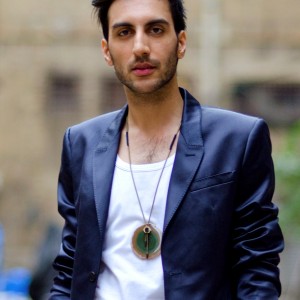
When and where did you start out as a stylist?
After school, I enrolled in a three year program at Istituto Marangoni in London. Along with the fashion training I received at school, I also assisted many stylists and editors in London during this time.
When did you know you wanted to be a stylist? Was it something you had aspired to since childhood, or did something inspire you to take it up?
I love magazines. I was very inspired by the imagery in fashion magazines growing up. I knew very early on that I wanted to create beautiful photos.
What does one need to study to be a stylist?
I don’t think it’s necessary to study a particular subject. Taking courses in fashion design, art history and visual communication can be very helpful. For me, though, what is most important is to identify someone’s style you admire and assist them for a long
period.
How does one make their name in the industry as a stylist? What kind of skills do you require, besides an eye for aesthetics and design?
Hard work and motivation are essential. I also think good people skills are important.
Could you give us an insight into your journey through the industry?
It is very important to assist as many stylists and intern at as many publications as you possibly can. You will learn more here than at any school. It is also important to cultivate your individual style and identify where that fits in the industry early on. Be a sponge. Soak in as much art, music, culture as you can. They will all inform your work.
Who do you look up to in the industry as role models?
Grace Coddington, Lucinda chambers, Edward Enninful, Suzy Menkes, Nicolas Ghesquiere, and Phoebe Philo to name a few.
Shweta Navandkar
“TAKE THE ASSISTING PHASE SERIOUSLY AND GIVE IT YOUR ALL”
Shweta Navandar has a self-confessed eye for fashion and a love for all things stylish. Navandar has successfully followed her childhood dream and turned her passion into a vibrant career, as she reveals
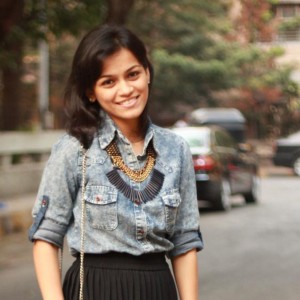
How did you start out as a stylist?
I’ve always wanted to do something in fashion. The first job I got was as a marketing coordinator with Verve, where I actually saw what stylists produced. Styling thus occurred to me as an exciting way to enter into this industry, since I did not have any formal education in fashion. It has been more of an on-the-job experience for me.
How does one make their name in the industry?
I think it’s important that you take up a lot of projects initially, be it big or small. This helps in building your portfolio and people then start recognising you by your work. Besides having the natural eye for fashion, it’s important to be efficient at multitasking and flexible and also to be able to put yourself in the learning chair with every project that you do. No matter how old or new you are in this field, there’s always something new to learn. And you should open to that and not get fixated in your particular way.
Could you give us an insight into your journey through the industry?
I started by assisting various other stylists as I wasn’t aware of the know-hows of this job at all. There are times when you don’t even have time to stop and eat because there’s so much to source and a lot of work to be finished before the end of the day. So yeah, there have been many downs rather than ups. But at the end of the day, when you see your work getting blown up inside a magazine’s pages or on hoardings; the feeling is awesome and it all seems worth it! I believe that the hands-on experience builds the foundation for you to start on your own.
Who do you look up to in the industry as role models?
Anaita Shroff Adajania and Rhea Kapoor. The add character to the work they produce and every detail is looked at.
Mitali Ambekar
“BE INQUISITIVE TO KNOW MORE AND APPLY NEW TECHNIQUES TO WORK”
For stylist Mitali Ambekar, styling was a hobby that developed into a career naturally. Excerpts from the interview

When and where did you start out as a stylist?
At Symbiosis Institute of Design, Pune, I took up a Fashion Communication course, which was an amalgamation of fashion studies, marketing strategies, brand building and selling. The course was also rich in various creative elements such as styling, photography, draping, trend forecasting, makeup, among other things. Styling was a skill set that was discovered during the four year span of my undergraduate course. Towards the end of second year, I started working with several photographers. Initially the experimental work outnumbered the commercial work, but it helped me build my contacts and display my styling work to existing clients. I also interned with a stylist based in Mumbai for a span of three months. This experience provided me an opportunity to observe, learn and grow. By the end of my grad school, I had worked with the who’s who in the city and thus had a ready market to work on.
What skills does a stylist need?
A stylist should be inquisitive to know more always and apply new techniques to work, must be creative, and patient to tackle all the workload, coordinate with the clients and the team.
Could you give us an insight on your journey through the industry?
As a stylist one is expected to work with different clients, models, makeup artists, photographers and agencies. The stylist needs to understand the job at hand and what the expected outcome is. Each and every project is different and requires ample amount of research, brainstorming, understanding and sourcing. There are no fixed timings. Shoots are planned overnight and the stylist is expected to be equipped for the next morning.
Who do you look up to in the industry as role models?
Grace Coddington is a stylist who most inspires me. Her creations are very dreamy and surreal. She adds a touch of a larger than life image to all of her works.
What would be your advice to young and aspiring stylists who want to make it big in the industry?
There is no trick to crack the dream job. Try all that you can, make your mistakes and learn from them.
Fashion Accessories – Creating Blingalings
As a fashion revolution has swept across India in the past few decades, a lot of trends have emerged with the times which have blurred many lines and broken stereotypes. Men’s fashion is one which has experienced a lot of growth and radical changes, particularly the rising demand of accessories for men
Sohel Lalvani
“WE’RE BRINGING SEXY BACK”
“A little playful, a little smart…always st ylish”, this defines The Bro Code. The founder, Sohel Lalvani, had always been aware of the importance of accessories in men’s fashion. The idea of reviving men’s fashion in India, in a time that it seems to have been left out, gave birth to this ultra-cool brand. He gives us a lowdown of creating and selling accessories in India:
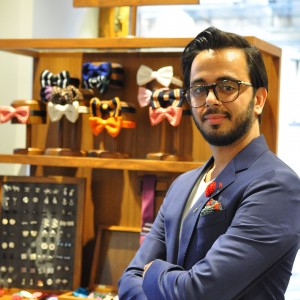
What inspired you to set up The Bro Code?
The Bro Code was launched as part of a larger retail company, Toniq Retail Brands Private Limited. This is the first men’s accessories brand to launch within the company, after starting three women-centric labels; toniQ, Fida and Pulse. We started The Bro Code after identifying a niche in the market. I found that simple products like cufflinks, bowties, and lapel pins were not readily available in the market. In India’s fashion movement, men seem to have been left behind.
What has the response been like and what is the further scope?
Overwhelming! It has been great to see the reaction from consumers who really appreciate the product and the thought that has gone into creating each collection. It’s also been interesting to see that women have been buying a lot of the product for gifting. We plan to introduce a lot of new product lines now to make The Bro Code a one-stop shop for men’s lifestyle.
How elaborate is the process from ideating designs to creating and shipping your products to your customers?
We, as a team, dedicate a lot of resources to researching and analyzing trends for the next season to ensure we are up to date with international trends as well. We then focus on the Indian market and what would work in terms of styles and colours for the local consumer. Our in-house style team then modify or create new styles based on this research and work with our international factories and suppliers on the fabric, material and final design. Once the product reaches us in India, we have everything photographed and merchandised for it to go up on our retail platforms and make it available to the customer as soon as possible.
How do you ensure that your brand stays on the top and creates its own distinct mark in men’s accessories?
We’ve had a lot of celebrities spotted in our pieces since we launched. Our product range is quite wide, so there is something for everyone and we’ree trying to keep on top of the international trends. You’ll see new product launching on our website every 2-3 weeks.
What advice would you give to aspiring online retail start ups?
Just go for it! If you have an idea that you believe in 100% and absolutely love, then just dive in to the deep end.
Fashion Blogging – Influencing Trend Setters
Blogging, today, has expanded to more than just a personal corner in cyberspace to release the frustrated writer in you. It inspires, informs and incorporates various themes to engage anyone who reads them. Fashion blogs set a platform for all the aspiring divas out there to step up their game and share their style tips with the world
Roxanne D’souza
“BE TRUE TO YOURSELF AND YOUR OWN STYLE”
Roxanne D’souza is a young designer and ex-stylist who founded a widely followed fashion blog, head2heels. She decided to start her blog in 2010 and also collected her own data and shared her posts which got a lot of appreciations from followers all around the world

When did you start your fashion blog?
I started in 2010 when it still wasn’t big in the country. I got tired of bookmarking a hundred different websites, so I decided to compile my own data (for me, since I used to style and design) and made an account at Blogger to publish my own posts. Soon, I started getting visitors from all over the world who thanked me for my “research” as it helped them in their own projects. By 2012, I added a more personal touch with my own style and it just kept growing.
What advice would you give to people who aspire to start a fashion blog of their own?
Research! You need to have your research done and know what you want to do. Find your niche and know your audience. Anyone can hold a bag or say “look at my new dress”, but you might need to go a little deeper to connect with your readers. It’s always good to set your own personal style before you try and influence others.
What are the most important skills a fashion blogger must have?
You need to understand fashion and be able to comprehend basic things. As a blogger, you don’t only have to think about how to dress, but also offer ideas to your readers and understand that they may not be all skinny or tall. Apart from this, you have to be active on social media. You should be able to write something that makes a little bit of sense. Attractive photos are just not enough.
How hard is it to establish yourself and stand out of the crowd?
It is extremely hard if you haven’t discovered who you are yet. Once you have, standing out is a piece of cake. Standing out translates to being different from the rest, but that doesn’t always equal to popularity. There are many such bloggers I’ve seen who don’t have a massive following on social media, but have left an impact of their own and do things their own way. It’s easy to copy and get inspired by runway and celebrity styles, but it takes effort to actually get inspired and incorporate the same into your own personal style.
Do you think blogs have a wider reach than fashion magazines?
Blogs and fashion magazines are two very different things and are equally important in their own ways. Blogs became popular when the regular woman could not relate to magazine editorials of skinny models, and added a little personal touch, because each blog is run by a distinctive individual with unique thoughts and ideas. Magazines are of course more popular because they have huge backing from publishing houses and a huge team of professionals; but blogs are a little more independent and an average blog’s team (if any) may include a blogger and a photographer. You pay to buy a magazine issue, but you don’t have to spend anything to check out a blog. Both of them have their own reach to different kind of people and are popular in their own way.
Encapsulating every aspect of a confident, stylish young icon, Malavika Mohanan is a Mumbai based actress who made her debut in the Malayalam film industry with the movie Pattam Pole. She may have made her mark on the silver screen only recently, but Malavika has always been a true fashionista and her blog is the perfect example of the same. Her Tumblr blog, The Scarlet Window, gives you a taste of the perfect patented blend of traditional and contemporary ensembles that she models herself. The Scarlet Window was hence, conceived out of an eager desire to revive native styles, and fuse it with the new-age trends to created wearable, contemporary Indian looks. Classy, elegant and tradition redef ined.
Take a look at her blog at: http://thescarletwindow.tumblr.com/
Fashion Courses – Top Institutes in India
We bring you a list of the best institutions in India that offer various courses in the fashion industry so that you can make a wise, informed choice about your career and pursue your passion with absolute clarity
NATIONAL INSTITUTE OF FASHION TECHNOLOGY (NIFT)
National Institute of Fashion Technology was set up in 1986 under the aegis of the Ministry of Textiles, Government of India. It has emerged as the premier Institute of Design, Management and Technology, developing professionals for taking up leadership positions in fashion business in the emerging global scenario. NIFT has set academic standards and excelled in thought leadership by providing technically competent professionals. The Institute provides a common platform for fashion education, research and training. NIFT offers four-year bachelor and two-year master programmes in the areas of Design, Management and Technology.
For more information visit: http://www.nift.ac.in/
NATIONAL INSTITUTE OF DESIGN (NID)
National Institute of Design is internationally acclaimed as one of the finest educational and research institutions for Industrial, Communication, Textile and IT Integrated (Experiential) Design. It has been declared ‘Institution of National Importance’ by the Act of Parliament, by virtue of the National Institute of Design Act 2014. National Institute of Design offers professional education programmes at Bachelors and Masters level with five faculty streams and 20 diverse design domains
Fore more information visit: http://www.nid.edu/
PEARL ACADEMY
Founded in 1993, Pearl Academy is India’s largest private institution in design, fashion and creative businesses, which has helped shape the business and creative landscape of these industries over the past 21 years. Driven by a commitment to create adaptable and highly sought-after graduates, it ensures student-outcomes are the center of every initiative. A high-caliber and experienced faculty, each equipped with Post Graduate Certificate in Higher Education (PGCHE) in Pedagogy from NTU, UK, helps deliver on this promise. Backed by the resources and expertise of a global network of renowned institutions such as London College of Fashion, Nottingham Trent University (NTU), Domus Academy (Italy), and NABA (Milan) among many, Pearl Academy is able to ensure that in today’s accelerated world, Pearl students are able to achieve their personal goals by becoming game-changers and achievers. It delivers over 30 uniquely designed under-graduate, post-graduate and professional programs through its 4 campuses in Delhi, NOIDA, Jaipur and Mumbai, and has close to a 100% placement record. Pearl is also a member of the Laureate International Universities network, which has a presence in 29 countries, serving more than 950,000 students.
For more information visit: http://pearlacademy.com/
ISTITUTO MARANGONI
Giulio Marangoni founded the Istituto Artistico dell’abbigliamento Marangoni, or The Marangoni Artistic Clothing Institute in Milan; a school to train professionals and technicians who were highly specialized in the world of fashion. With a wide range of course possibilities: preparatory, three-year undergraduate and masters, Istituto Marangoni trains the professionals of tomorrow in key sectors, such as creation, communication, and managerial coordination.
For more information visit: http://www.istitutomarangoni.com
WHISTLING WOODS – NEETA LULLA SCHOOL OF FASHION
Whistling Woods Neeta Lulla School of Fashion is unique as it’s the only school with film and fashion on the same platform. Both have always been very closely linked and this provides the right exposure at an early learning stage while students learn to style for movie characters for student film projects. They work in backstage assistance at various fashion shows, do visual merchandising for top of the line brands in India, style clothes for student’s film projects as per character requirement and much more. Students can choose from courses like: BA in Fashion Design (Degree awarded by the Tata Institute of Social Sciences), Diploma in Fashion Design, MBA in Fashion and Retail Management ( Degree awarded by Bharathidasan University)
The majority of faculty members at WWNL School of Fashion work simultaneously in the industry. Hence, students are constantly exposed to hands on learning, practical experience, industry feedback and are taught based on current industry requirements.
For more information visit: http://whistlingwoods.net/whistling/schools/school-offashion
RAFFLES DESIGN INTERNATIONAL
Raffles Design International is the largest private education group in Asia-Pacific with more than 20,500 students enrolled in RafflesEducationCorp’s tertiary programmes who benefit from a quality education that provides graduates with a well-rounded hands-on experience relevant to the industry. They offer Bachelor of Design degrees in Fashion Design, Interior Design, Product Design, Graphic Design, Multimedia Design, and Fashion Marketing. As part of their design training, the students perform internships at renowned companies and will also be able to develop a substantial work portfolio for themselves that will help them in building their careers.
For more information visit: http://www.rafflesmumbai.com/
SYMBIOSIS INSTITUTE OF DESIGN (SID)
Symbiosis Institute of Design presently offers an Under-Graduate Programme in Design and is under the ‘Faculty of Media, Communication and Design’ of the Symbiosis International University (SIU). SIU awards Bachelor of Design (B. Des) degree to the successful students in any one of the following disciplines viz. Communication Design, Industrial Design, Fashion Communication and Fashion Design.
For more information visit: sid.edu.in
The Stars of Tomorrow
YIFA 2015 showcased performances of some extremely talented youngsters of today, paving way for the creative entertainers of our generation. Nancy Varghese gets chatting with the star performers of the ceremony
BEAT TWISTERS
Rohit Bhatnagar (Choreographer)
The formation of Beat Twisters came about…
…3 years ago, when I visited Jai Hind College to choreograph them for an intra-college event. I discovered a bunch of talented kids who came to audition and all they wanted to do was dance. That’s when the idea of forming a group came about and here we are today.
The only criteria to become a part of Beat Twisters…
…is the mantra “If you worship dance, Beat Twisters is for you.” Leave the training to me.
Beat Twisters has performed in several places…
…including college festivals like Malhar, Mood Indigo, Kshitij, to name a few. We have also performed for corporate shows, television shows like ‘Anmol Hai Tu’ for Star Plus, Channel V India Fest , promos for Sony, music videos and even a flash mob for Times of India.
The students have their practice sessions in…
…our studios in Andheri and Charni Road, where we train these talented bunch of students.
The genres that we focus on…
…are primarily Bollywood, Bollyhop and Hip Hop. I personally choreograph all the routines, but at the same time, we brainstorm for ideas. The crew gives their input every now and then so it helps us to grow as a group.
ARITRO R. BANERJEE
The comedy bug bit me when…
…I was around fifteen and I saw a stand up act being done in school. I always had a passion for comedy and as the years went by, I thought why not leave with something to remember me by? So I came up with a short and amateur script to see how it is, and when I presented it, it seemed to work.
My biggest inspiration..
…is Jim Carrey. The most important thing he taught me was: don’t worry if it looks stupid; just do it.
My script ideas…
…truly come from my own experiences. But the thing about jokes is that, you don’t know when it happens. It just does in that moment, or just something that sounded stupid at one point in time but you just keep it because maybe one day it might make sense.
Scope for stand up comedy
Stand up comedy, at one point of time, was very rare and many people didn’t know what it was. It’s quite different now as comedians are being seeked out everywhere. Even the really established ones like AIB, East India Comedy, and Weirdass are taking an initiatives to take young stand up comedians under their wing, not to teach them but fine tune them. I think that’s brilliant.
Volume 4 Issue 11





















